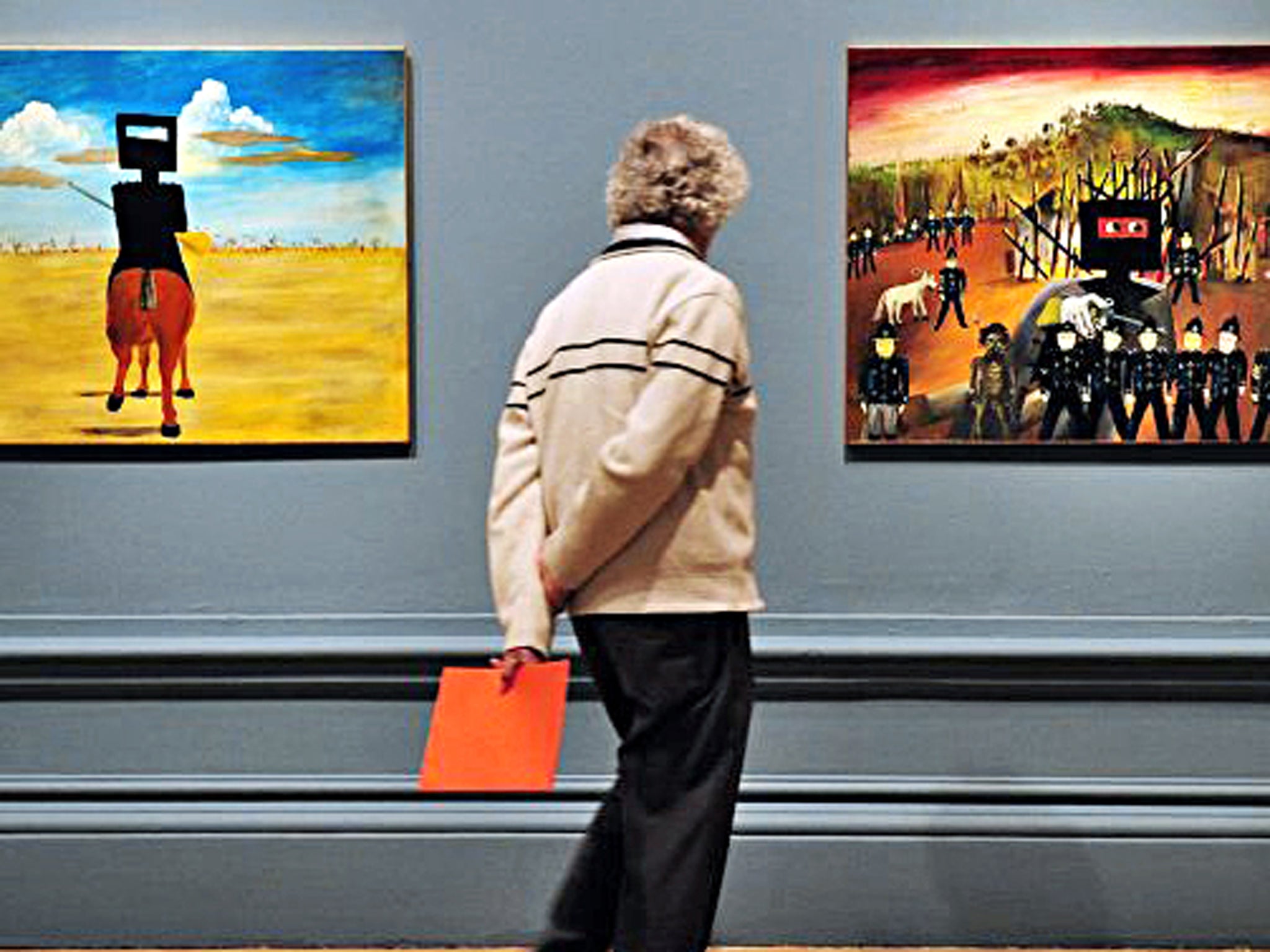Simon Calder: Reasons to head Down Under
The man who pays his way

The standard measure for geographic comparison – the size of Wales – is plainly inadequate when trying to convey the scale of Australia. To fill even the smallest mainland state, Victoria, you would need a dozen of the principalities. Victoria alone is bigger than Britain, while Western Australia is 11 times larger.
My favourite calculation goes beyond planet Earth. If you left out the island state of Tasmania (as cartographers are prone inadvertently to do), you would need only five Australias completely to cover the surface of the moon.
Given the lunar desolation that much of Australia resembles, some might say it would be tricky to tell the difference. Poms used to suggest that the "Lucky Country" was as impoverished artistically as the endless deserts of South Australia. As the old joke about the capital of the driest state in the most arid continent went:
Q: What's the difference between Adelaide and yoghurt? A: Yoghurt has live culture.
Not any more. This weekend, the Royal Academy in London launches Australia, an exhibition reflecting the nation's artistic journey through the past two centuries; see bit.ly/Strewth for details. It is significant that the opening takes place over the equinox. For the next six months, the daylight advantage rests with the Southern Hemisphere. British autumn corresponds with the first flourish of spring in Australia's southern states. That is why we have chosen to celebrate the nation today. We aim to provide inspiration to explore everything from Tasmania to Aboriginal art in the Northern Territory – which, from 1 November, becomes more accessible thanks to a new connection on Malaysia Airlines from Kuala Lumpur to Darwin. That adds yet another option to the choices for disappearing Down Under by Airbus or Boeing.
The world's favourite fares war
Q: What's the difference between a Boeing 747 and a Pom? A: the 747 stops whining when it gets to Sydney.
The British visitor on a tight budget in 2013 will find plenty to whinge about in Australian prices for everything from beer to beds. The strength of the Australian dollar means the country can be as eye-wateringly expensive as Norway and Switzerland; but today's Big Six on backpacker beds may help you save something.
Poms pleading poverty, though, can have no argument about the cost of reaching Australia. Until the Eighties, air fares were so astronomical that a journey to Sydney was as remote a possibility for the average Brit as a trip to the moon (and in those days the joke about the moon having a better atmosphere than some pubs in Queensland still rang true).
Then air fares started to tumble. Part of the credit rests with Britannia Airways, as Thomson's in-house airline used to be known. In the mid-Eighties, it hit upon a smart answer to the perennial question: "What can we do with our Boeing 767s all winter?". It launched charter flights from UK airports to Australia. The move coincided with steeply increasing capacity, competition from Asian airlines and increasing desperation from European carriers. A fares war began, which has rumbled on ever since.
The cheapest fare I managed to find was £599 in 1994, on a combination of Malaysia Airlines and Britannia – out via Kuala Lumpur, back via Singapore and Sharjah. But the very cheapest London-Sydney return ever sold publicly was £352. Two airlines offered it at different times. A decade ago, Alitalia offloaded some of its vast "distressed inventory" from London via Rome to Sydney, subsidising thousands of happy Brits and Australians. More extreme was the deal offered 20 years ago by Northwest Orient (now part of Delta). It began with a DC-10 flight from Gatwick to Boston. Then a hop on a commuter plane to New York's La Guardia airport and a cross-town transfer to JFK. Here you boarded a 747 to Osaka in Japan via Anchorage in Alaska. The jumbo continued from Osaka to Sydney, where passengers stumbling off the plane gave new meaning to the term "dis-Orientated".
At the start of this century, BA had frequent Boeing 747 flights to Brisbane, Melbourne, Perth and Sydney; today, it has a token daily departure to Sydney, using a smaller 777. Qantas used to fly via Bangkok, Hong Kong and Singapore to Melbourne, Perth and Sydney. Now it has only a daily service via Dubai to Melbourne and Sydney, albeit on an Airbus A380. Singapore Airlines and Cathay Pacific are very much in the game, but many others have withdrawn in the face of competition. In their place: the Middle East carriers. The default airline between the UK and Australia is now Emirates. It offers multiple connections from six British airports to five Australian cities, with a single touchdown in Dubai. Etihad and Qatar Airways are intensifying the fares war via their Abu Dhabi and Doha bases. In October, when the UK minimum wage increases to £6.31, Vietnam Airlines will take you from London to Sydney and back for £850 – representing just 17 days' work for people on the lowest legal rate of pay.
Passport self-control
After touchdown, when the Australian immigration official asks: "Any criminal convictions?", don't be tempted to look aghast and respond: "I didn't realise they were still obligatory." Instead, you might like to point out it would take 555 Tasmanias to cover the surface of the moon. Or nearly 2,000 Waleses.
Subscribe to Independent Premium to bookmark this article
Want to bookmark your favourite articles and stories to read or reference later? Start your Independent Premium subscription today.

Join our commenting forum
Join thought-provoking conversations, follow other Independent readers and see their replies